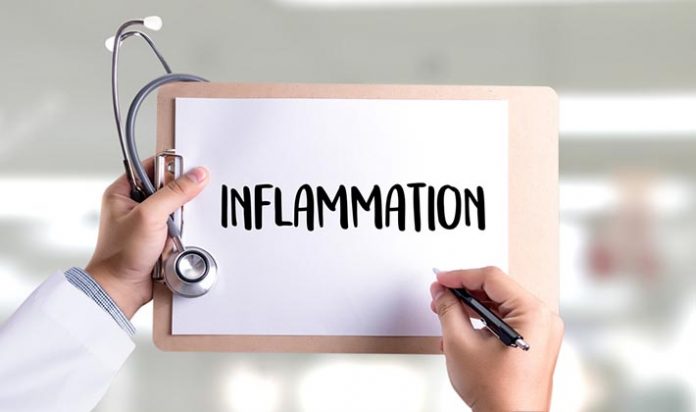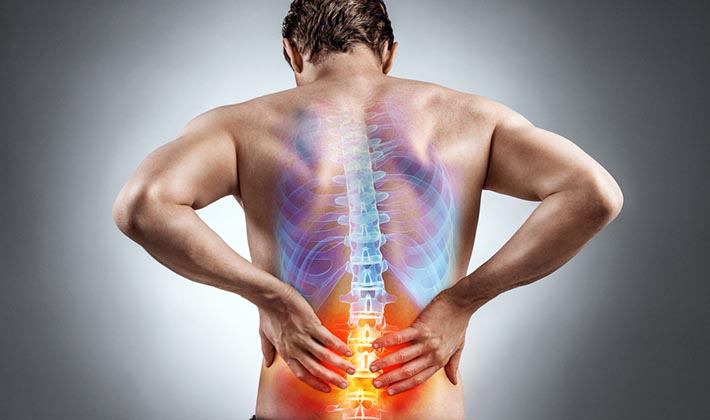
Inflammation is actually an important part of your body’s immune system. More specifically, when something dangerous is detected in the body, inflammation is the process by which white blood cells, and other components of the immune system, eliminate the threat. It comes in two different forms: acute inflammation, and chronic inflammation
Acute Inflammation
Eliminating a virus, bacterium, or fixing broken tissue is a pretty messy process on the cellular level. It leaves behind a lot of toxins that are hard for the body to clean up. This, in a nutshell, is inflammation.
Acute inflammation is the good kind of inflammation. It only happens as needed, and for a short duration. When inflammation is acute, cleanup is easy and you don’t have to worry about long-term repercussions.
It’s when inflammation happens too often and gets out of control that it transforms into chronic inflammation – and chronic inflammation has been linked to some of the worst diseases in modern medicine today.
Chronic Inflammation
here’s the easiest way to understand the effect chronic inflammation has on your body:
Imagine you live in a small town with only one fire truck. Now imagine the siren on that fire truck breaks and nobody can figure out how to shut it off. It’s blaring at all hours of the night and day, disrupting people’s sleep and keeping them awake at night. The loud noise creates traffic problems and causes more accidents than usual because drivers are distracted and startled by the noise. That broken siren sure is causing a lot of problems!
Chronic inflammation in your body has a similar effect. When your immune system is constantly on high alert, it creates chaos – and it leaves behind a big mess which becomes more and more difficult for your body to clean up over time.
What Causes Inflammation?
Acute inflammation is caused by:
- Sudden, physical trauma
- Fungal infections
- Viral infections
- Bacterial infections
- Exercise
- Damaged/dying cells that are excreting toxins
- Cancerous or precancerous cells
Chronic inflammation happens when the initial, acute inflammation fails to eliminate the threat to your body. As long as the threat exists, your immune system will keep responding to it and trying to eliminate it. Doing this over and over and over again for weeks, months, or even years is the definition of chronic inflammation.
The longer you let it go on, the more damage it can do. It can go on to cause organ damage, heart failure, unbearable chronic pain, and worse. Complications from chronic inflammation can severely degrade your quality of life and result in premature death.
Beyond severe tissue damage, viruses, fungi, and persistent bacterial infections, chronic inflammation can be provoked by:
- Emotional stress
- Food allergies
- A lack of exercise
- Poor gut health
- An unhealthy diet with lots of ultra-processed food
- Substance abuse
- Insufficient and/or poor quality sleep
How to Get Inflammation Under Control

The manner in which you reduce inflammation largely depends on whether it is chronic or acute. With acute inflammation, you want to take small but effective steps as quickly as possible to assist your body’s own immune response. Some examples include:
For open wounds – clean the area with an antiseptic and apply a bandage. Change the bandage and clean the area at regular intervals (to avoid complications like infection) until the wound is completely healed.
For infections – see your doctor right away and get whatever appropriate antifungal or antibacterial/antibiotic medications are necessary. If it’s a viral infection, be sure to give your body plenty of rest and take fever reducers like aspirin if your body temperature gets too high. Also, make sure you’re up to date on your vaccinations and flu shots on a regular basis.
For physical trauma – alternate between hot and cold therapies on the affected area. If you are still feeling discomfort or have lost range of motion in a part of your body, make an appointment with your doctor or go see a physical therapist. Repeat as needed until the pain goes away and you regain full range of motion.
Getting chronic inflammation under control is a little bit trickier. It also might take more of an effort depending on how long you’ve been suffering from chronic inflammation and how much damage it has done. The short answer is that you’re going to have to make some significant diet and lifestyle changes. You may even have to start an exercise routine or change the one you’re currently doing. But if you do it right, you can start to get relief from your worst chronic inflammation symptoms very quickly!





















































